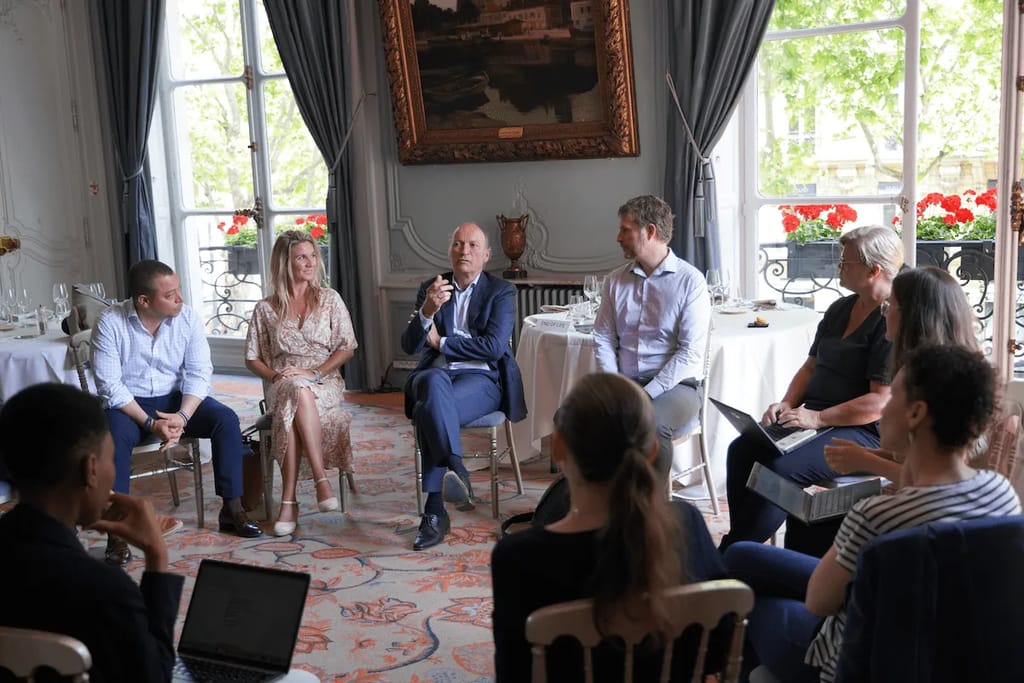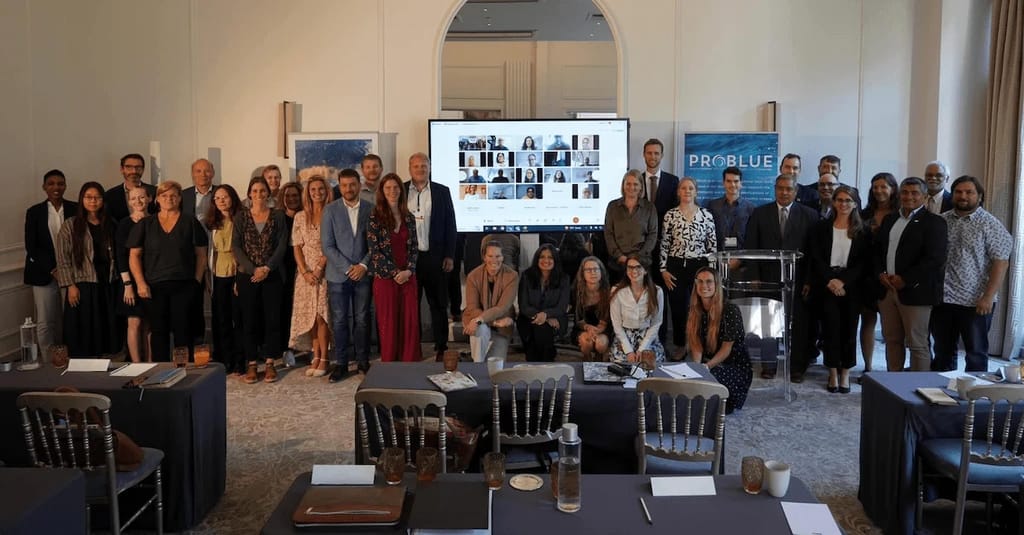Early last year, I had a front-row seat at the biggest international effort ever to tackle the scourge of plastic pollution. The United Nations Environmental Assembly (UNEA) meeting in Nairobi, Kenya, agreed to begin developing an international legally binding instrument on plastic pollution (ILBI), more commonly referred to as the global plastics treaty, with the ambition of completing the draft of this agreement by the end of 2024. Five Intergovernmental Negotiating Committee (INC) meetings were scheduled to move this work forward with the first one taking place in fall 2022 (INC-1) and the second in spring 2023 (INC-2).
Never miss an update
Enter your email and never miss an update
document.addEventListener(‘DOMContentLoaded’, function() {
const form = document.getElementById(’email-signup-64baa08c84dce’);
form.querySelector(‘.rsform__field–email’).addEventListener(“nb:result”, e => {
const nbStatus = form.querySelector(“[name=”nb_email_status”]”);
const nbDate = form.querySelector(“[name=”nb_validation_date”]”);
const tokenField = form.querySelector(“[name=”token”]”);
const currentDate = new Date();
nbStatus.value = e.detail.result.response.status;
nbDate.value = currentDate.toISOString().split(‘T’)[0];
grecaptcha.enterprise.ready(async () => {
const token = await grecaptcha.enterprise.execute(‘6Lcmr3shAAAAAAVRlvJrsUufEEQuItzNDlkpmB2g’, {action: ‘verify’});
tokenField.value = token;
});
});
});
<!– –>
Ocean Conservancy sees this process as a once-in-a-lifetime opportunity to tackle not just one but in fact two of the biggest threats facing our ocean today: plastic pollution and climate change. We must keep in mind, after all, that plastics are energy-and emissions-intensive and drive fossil-fuel demand and greenhouse-gas emissions. Consequently, to achieve a safe, livable climate we must address plastic production and pollution..
That’s why we need a comprehensive, ambitious treaty that:
- Results in meaningful source reduction of plastics, including eliminating those single-use plastics that are most commonly polluting our ocean.
- Addresses abandoned, lost or otherwise discarded fishing gear, also known as ghost gear- which is the deadliest form of plastic pollution in our ocean.
- Addresses microplastics, both those that are intentionally created small like cosmetic beads as well as those that break down from larger plastics into smaller pieces.
- Recognizes the need to design plastics for circularity—in other words, to be reused or easily recycled again and again, without the need for false solutions like chemical recycling.
- Includes the voices of informal waste sector workers, who are responsible for nearly 60% of all plastics recycled globally and often work in unsafe conditions.
Last month, Ocean Conservancy had a chance to make the case for these priorities in person at the second round of negotiations for the treaty, INC-2, held in Paris from May 29 to June 2.
In the days prior to the negotiations, Ocean Conservancy led or participated in a wide array of events with officials from multiple countries and organizations, sharing perspectives on how this international agreement could be designed to help protect our ocean from plastic pollution. One of many highlights was Ocean Conservancy’s Global Ghost Gear Initiative’s® co-hosting of The World Bank’s PROBLUE side-event on Abandoned, Lost, and otherwise Discarded Fishing Gear (ALDFG) alongside the Food and Agriculture Organization (FAO) and others highlighting the need for the ILBI to include specific measures to address this unique form of plastic pollution. The event was particularly relevant, as, until INC-2, there had been little focus on sea-based sources of plastic pollution such as ALDFG during negotiations and, as Nicholas Mallos, vice president of conservation at Ocean Conservancy and head of our ocean plastics program, has said, “We simply cannot effectively address the plastic pollution crisis in our ocean without addressing the prevalence and impact of ghost gear.”

if(typeof window.oc_media_credits === ‘undefined’) {
window.oc_media_credits = {};
}
window.oc_media_credits[69682] = “OC”;
Once the negotiations started, Ocean Conservancy took the floor from the plenary to express our vision and priorities to the committee. Our own Dr. Anja Brandon urged negotiators to include a minimum 50% target for source reduction of single-use plastics by 2050 and to keep chemical recycling out of the agreement. Later in the week, during the discussions on the elements and options that could serve as the basis for the development of the treaty, Ocean Conservancy’s Hannah Pragnell-Raasch proposed that ALDFG or “ghost gear” should be considered a separate and independent core obligation in the future agreement.
Outside of the plenaries, throughout the week Ocean Conservancy’s experts held bilateral meetings with country negotiators, senior policy makers and other partner organizations to advocate for critical priorities. In these conversations, countries and other organizations expressed their interest and commitment as collaborative partners to achieve the most ambitious agreement possible.

if(typeof window.oc_media_credits === ‘undefined’) {
window.oc_media_credits = {};
}
window.oc_media_credits[69683] = “OC”;
Coming out of Paris, a few decisions were made that will guide the work in the coming months as the process continues. Most importantly, negotiators agreed to a mandate for a zero-draft text, essentially the starting point for the content of the agreement that will be prepared for consideration at INC-3—the next round of negotiations. Stakeholders also agreed to reconvene for INC-3 in Nairobi, Kenya, this November.
Ocean Conservancy continues to work with countries around the globe to craft an agreement that will create a healthier future for our ocean. There is no time to waste tackling the ocean plastics crisis. Our planet needs it, our children need it, and our ocean needs it.
The post Dispatches from Paris on the Global Plastics Treaty Negotiations appeared first on Ocean Conservancy.

